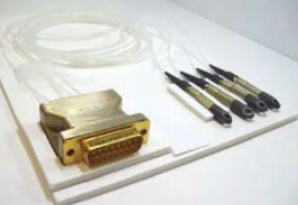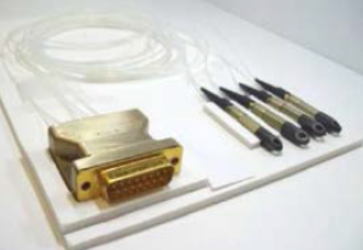Electronics and Avionics
Electronics and avionics projects of the Future Space Transportation programme include:
Power over Ethernet
Power over Ethernet technology allows mixing of power and signal transmission on the same cable and has the potential to save mass and cost, as well as to decrease operational complexity for launcher telemetry.
A project to define a modular launcher telemetry architecture based on this technology aims to utilise off-the-shelf components to reduce cost and development time. In the future, the system could be integrated into a larger avionics demonstrator and power other subsystems on the avionic bus.
Time triggered Ethernet

Time Triggered Ethernet (TTE) expands the classical Ethernet with services to meet time-critical, deterministic or safety-relevant conditions.
This system is intended as a baseline for the Ariane 6 launcher avionics, replacing the legacy MIL-STD-1553b avionic bus.
Reliable Sensor Network

The goal of this project is the maturation of wireless technologies for launchers with a focus on upper stages and vehicle equipment bay (VEB) telemetry applications.
A feasibility demonstrator was developed to test several different technologies such as smart sensors, infrared and Ultra Wide Band (UWB) communication, as well as the interface to the Time Triggered Ethernet (TTE) avionic bus.
Tests focus on functions, electromagnetic compatibility with the launcher environment as well as thermal and mechanical loads. This project also offers potential applications in inter-stage communication and can be extended with the implementation of self-powered sensors.
On board real time trajectory generation
This activity addresses the guidance and control problems encountered by a launcher considering mission needs, re-usability, adaptability, robustness and fast turn-around time of Guidance Navigation Control implementation.
The real-time adaptation contemplates trajectory optimisation functions of environmental parameters, failures and abort scenarios.
For reusability, an important feature will be the decision on changes on the landing site with attitude pointing constraints and many other aspects in which re-planning is required. On-board real-time guidance and control trajectory optimisation will greatly improve the safety and performance of launcher missions and will be a key part in the embedded mission robustness.
Functional System Analysis Software (FSAS)
The main objective of this project is to build a tool providing the capability to quickly assess design options and system architectures, in the frame of a higher level simulator. It focuses on development of simplified upper-stage models for the following disciplines: propulsion, Guidance Navigation Control, mass-budget, mechanical, thermal.
Advanced Avionics Test Bed

The advanced avionics test bed features several innovative technologies such as: harness fault detection, power over Ethernet, opto-electronic telemetry systems and fibre Bragg grating sensor modules that allow the connection of multiple sensors via a single fibre.
On ground and in-flight demonstrations are foreseen.





